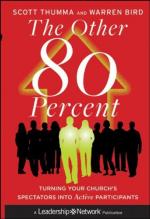[Footnote 3: Annus Mirabilis, st. 39.]
[Footnote 4: Ad Brutum. Orator. Towards the beginning:
Facile est enim verbum aliquod ardens
(ut ita dicam) notare, idque
restinctis jam animorum incendiis, irridere.]
[Footnote 5: On the Sublime, Sec. 36.]
[Footnote 6: Trajan Boccalini, born at Rome in 1554, was a satirical writer famous in Italy for his fine criticism and bold satire. Cardinals Borghese and Cajetan were his patrons. His Ragguagli di Parnasso and la Secretaria di Parnasso, in which Apollo heard the complaints of the world, and dispensed justice in his court on Parnassus, were received with delight. Afterwards, in his Pietra di Parangone, he satirized the Court of Spain, and, fearing consequences, retired to Venice, where in 1613 he was attacked in his bed by four ruffians, who beat him to death with sand-bags. Boccalini’s Ragguagli di Parnasso has been translated into English, in 1622, as News from Parnassus. Also, in 1656, as Advertisements from Parnassus, by H. Carey, Earl of Monmouth. This translation was reprinted in 1669 and 1674, and again in 1706 by John Hughes, one of the contributors to the Spectator.]
[Footnote 7: To this number of the Spectator, and to several numbers since that for January 8, in which it first appeared, is added an advertisement that, The First and Second Volumes of the SPECTATOR in 8vo are now ready to be delivered to the subscribers by J. Tonson, at Shakespeare’s Head, over-against Catherine Street in the Strand.]
* * * * *
No. 292. Monday, February 4, 1712.
Illam, quicquid agit, quoquo Vestigia
flectit,
Componit furlim, subsequiturque decor.
Tibull. L. 4.
As no one can be said to enjoy Health, who is only not sick, without he feel within himself a lightsome and invigorating Principle, which will not suffer him to remain idle, but still spurs him on to Action: so in the Practice of every Virtue, there is some additional Grace required, to give a Claim of excelling in this or that particular Action. A Diamond may want polishing, though the Value be still intrinsically the same; and the same Good may be done with different Degrees of Lustre. No man should be contented with himself that he barely does well, but he should perform every thing in the best and most becoming Manner that he is able.




